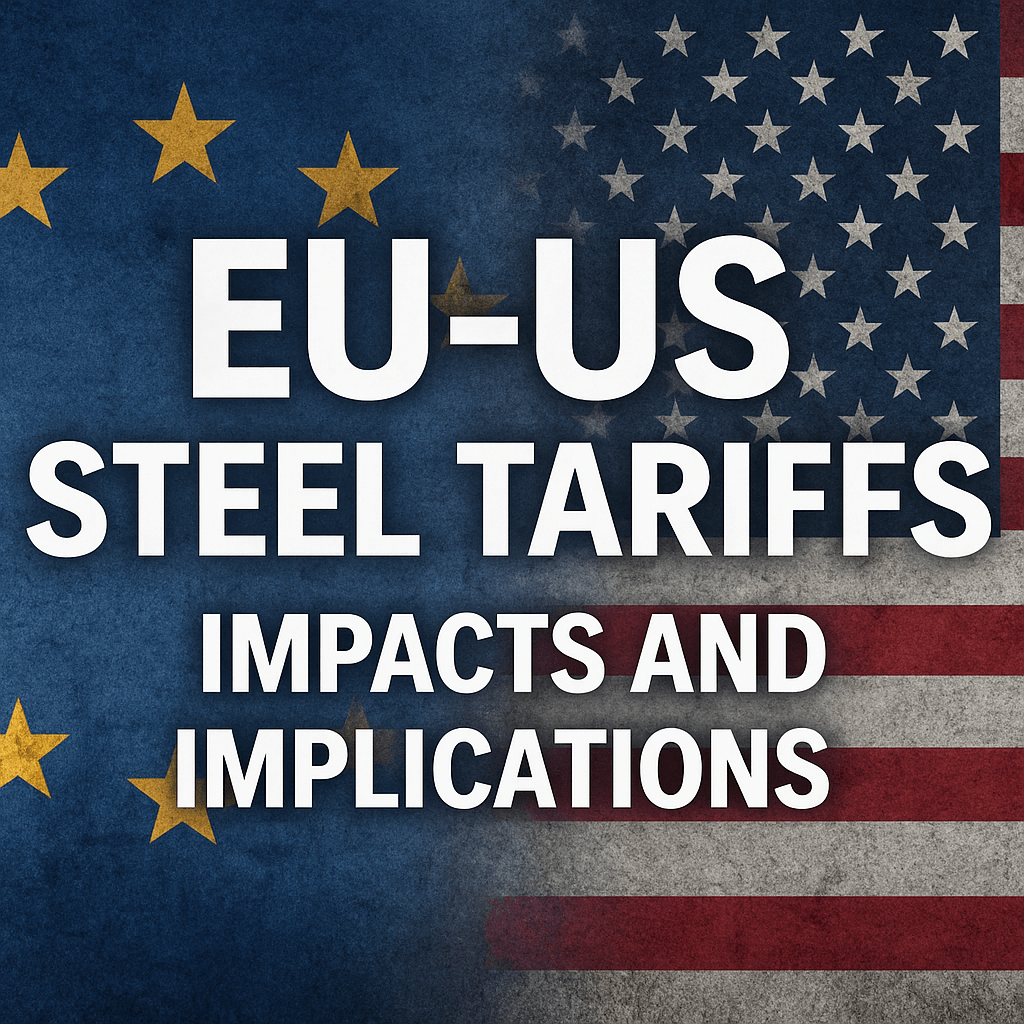EU-US Steel Tariffs: Impacts and Implications

The European steel sector is facing unprecedented challenges following the recent decision by the United States to implement a blanket 50% tariff on steel and aluminum imports. This action, described by many industry experts as a significant escalation in the ongoing trade conflict between the EU and the US, may drastically alter global trade patterns and impact European manufacturers.
Overview of the Tariff Measures
On Monday, US President Donald Trump signed an executive order to enforce these tariffs, a move presented by the White House as necessary for national security and support of domestic industries. Trump asserted that this tariff increase aims to eliminate the perceived national security threat posed by imported metals, particularly from countries with excess production capacities such as China. This marks a continuation of tariffs initiated in previous years, which were established under the rationale of protecting American interests.
Expert Commentary
“With the doubling of US blanket tariffs on steel to 50% without exceptions, we expect massive deflection of the 27 million tonnes of steel previously destined for the US towards the European market,” warned Axel Eggert, Director General of the European Steel Association (EUROFER). “We are being flooded by cheap foreign steel,” he added. “Without swift action, we will not just be underwater — we will drown.”
Impact on European Steel Industry
The European steel industry has been grappling with challenges related to overcapacity, particularly stemming from China. The recent imposition of tariffs is anticipated to aggravate these pressures. Kerstin Maria Rippel, Chief Executive of the German Steel Federation, articulated that the tariffs represent a severe burden for the industry, already grappling with a sluggish economy and potential job losses in the sector.
- Potential surge in steel imports into the EU, raising import penetration levels to as much as 30% by 2025.
- Increased competition from non-EU countries that could result from a diversion of steel that was originally intended for the US market.
- Possible increases in domestic steel prices, impacting downstream industries such as automotive and construction.
Geopolitical Ramifications
The rise in tariffs has raised tensions within trade negotiations between the EU and the US. EU Trade Commissioner Maroš Šefčovič expressed regret over the tariffs, noting, “It doesn’t help, especially as we are making progress.” This statement came after his meeting with US counterpart Jamieson Greer against the backdrop of ongoing discussions to resolve trade disputes.
Notably, the EU is also contending with existing tariffs, including a 25% levy on automotive imports and a 10% tariff on various other goods. Concurrently, the US has been investigating other sectors such as pharmaceuticals and semiconductors, which could prompt further tariff measures against EU products.
Future Negotiation Landscape
As negotiations continue, both sides have submitted proposals but have yet to reach a consensus. The EU’s strategy includes a zero-for-zero tariff regime on all industrial goods and strategic purchasing agreements related to energy and technology. Conversely, the US has indicated expectations for regulatory reviews from the EU that could influence its offer.
The political landscape is further complicated as Trump continues to threaten the imposition of additional tariffs if negotiations do not yield mutually agreeable outcomes by July 9.
Conclusion
The latest US tariffs on steel and aluminum introduce a critical juncture in transatlantic trade relations. With the potential for increased steel inflow into the EU and the ongoing diplomatic efforts to resolve trade tensions, industry stakeholders and policymakers must remain vigilant. The consequences could reshape not just the steel industry but also the broader economic landscape across Europe and the United States.
Source: euronews